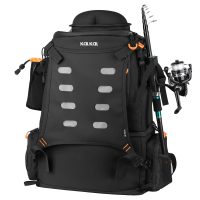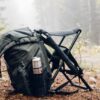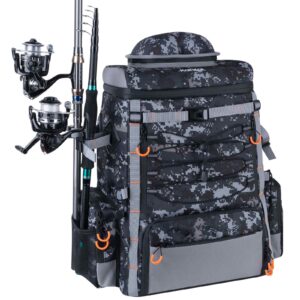Deer hunting is one of the famous hunting activities that include talent, endurance, and efficiency, as well as knowledge of the behavior of deer. Some of the factors that play a huge role in the movement and activity of the deer include pressure. By following the relationship that barometric pressure has with deer hunting, hunters can improve their success rates.
In this blog post, we will discuss the connection between barometric pressure and deer hunting. That conversation will include the definition of barometric pressure, how it is gauged, and the influence it has on deer activity. It will also contain the hunting strategies according to the barometric pressure difference.
What Is Barometric Pressure?
Barometric pressure is the pressure exerted by the weight of the atmosphere on the surface of the earth.
It is expressed in millibars (mb) or inches of Mercury (inHg). Fluctuations in barometric pressure influence weather and as a result, the movements of animals such as deer.
How Is Barometric Pressure Measured?
Barometers are devices that are employed for measuring pressure in the atmosphere. There are two main types:
Mercury barometers: These are age-old instruments that are based on the use of a column of mercury to provide the pressure value. In a barometer, the height of the mercury column measures the atmospheric pressure.
Aneroid barometers: They both utilize a closed metallic chamber that varies in volume as pressure increases or decreases. An arrow pointing at a dial informs the pressure reading.
Relationship Between Deer Hunting And Barometric Pressure
Most animals are aware of the change in barometric pressure, and so does deer. These changes are that they can affect their feeding, moving, and even general activity. Such as:
- High pressure(Above 30.2 inHg): High-pressure systems are associated with clear sky conditions, high day temperatures, and gentle breezes. Deer may also be in larger numbers during this time because they are not as concerned with finding shelter or an area that is shielded from a storm.
- Low pressure(Below 29.8 inHg): Low pressure almost always results in cloudy and rainy weather with a corresponding increase in wind. It is likely that deer are less active and prefer to stay still or seek cover during this time.
Identify the Ideal Barometric Pressure For Deer Hunting
Deer can have their normal behaviors changed or interrupted if the pressure changes rapidly.
The ideal barometric pressure range for deer hunting is generally considered to be between 30.0 and 30.4 inHg. Most hunters concur that slow changes in barometric pressure are ideal for deer hunting.
Deer are usually routine animals, which basically prefer and depend on routine patterns. This way they are able to build up sets of feeding, movement, and resting behaviors due to the consistency of the pressure.
When the pressure rises quickly, it can alter these patterns thereby making the deer more alert and less active.
However, one should notice that the barometric pressure optimum remains variable due to local circumstances, deer presence, and deer activity. Individual deer may also vary in their ability to withstand pressure, and some geographical areas are less susceptible to fluctuations in weather.
Finally, the best way to know the right barometric pressure range for a given hunting place is to just monitor and take notes.
What Is The Best Weather For Deer Hunting?
Before knowing the best weather for hunting deer, we first learn about some common questions related to weather and deer movement:
Do deer move in wind and rain?
While deer may be less active in strong winds and rain, they may still need to move to find food or water. However, they are more likely to seek shelter or areas with better cover during these conditions.
Do deer move more in the cold?
Deer may be less active in extreme cold, but they will still need to forage for food. To conserve energy, they may reduce their activity levels and seek out sheltered areas.
Do deer move more in the heat?
Deer may be less active in extreme heat, especially during midday hours. They may seek shade, water, or other cool areas to avoid heat stress.
Most hunters love hunting when the weather conditions are moderate with little or no wind at all and partly cloudy. These conditions are ideal for the hunters and deer and they can offer good sight binoculars for sighting the deer
Moderate temperature of the weather enables deer to roam around easily without being too stressed by heat or extreme cold. The lack of breeze makes it hard for the deer to detect the hunters and also for the hunters to hear them.
Finally, cloudy condition brings an adequate amount of light but not very bright or very dull. Also, these conditions can make the hunting process less tiring and boring for the hunters as well as the deer.
Tips for Using Barometric Pressure In Deer Hunting
Barometric pressure, a measure of atmospheric pressure, can significantly influence animal behavior and activity levels. Understanding and utilizing this information can greatly enhance hunting success.
Apply Different Hunting Strategies
High Pressure
High-pressure systems often bring clear skies, calm winds, and stable temperatures. This can lead to increased animal activity, especially for species that rely on sight and scent for hunting or foraging.
- Focus on areas with abundant food sources and water.
- Early morning and late afternoon are often prime times for hunting during high pressure.
- Consider hunting in areas with natural windbreaks or during calmer periods.
- Pay attention to animal tracks and signs, as they may be more active in search of food.
Low Pressure
Low-pressure systems often bring cloudy skies, rain, or snow, which can disrupt animal behavior. However, the changing weather conditions can sometimes drive animals to seek shelter or food.
- Pay attention to areas where animals may seek refuge, such as thickets, rocky outcrops, or hollow logs.
- Be prepared for changing weather conditions and adjust your hunting tactics accordingly.
- Consider hunting near water sources, as animals may congregate there for drinking or foraging.
- Use scent control measures to avoid being detected by animals.
Changing Pressure
Periods of rapidly changing barometric pressure can sometimes lead to increased animal activity. As the weather shifts, animals may become more active in search of food or shelter.
- Monitor weather forecasts and be ready to capitalize on these periods.
- Focus on areas where animals may be most vulnerable during times of change, such as near water sources or along migration routes.
- Be patient and observant, as animals may become more cautious during times of changing weather.
Monitoring Weather Changes With Tools
- Barometers: Analog and digital barometers can provide accurate readings of atmospheric pressure.
- Weather Apps: Many smartphone apps offer detailed weather forecasts, including barometric pressure, temperature, wind speed, and precipitation.
- Hunting Apps: Specialized hunting apps often incorporate weather data, such as barometric pressure, along with other features like GPS navigation and trail mapping. To choose a hunting app, please our best hunting app review.
Using Barometric Pressure as a Guide
While barometric pressure can be a valuable tool, it’s essential to consider other weather factors as well. For instance:
- Temperature: Extreme temperatures can affect animal activity. Some species may be more active during cooler temperatures, while others may seek shelter during heat waves.
- Wind: Strong winds can disrupt animal communication and make hunting more challenging. Consider hunting in areas with natural windbreaks or during calmer periods.
- Precipitation: Rain or snow can influence animal behavior. Some species may become more active during or after precipitation, while others may seek shelter.
Record Observations
Taking notes of your observations is important to recognize the trends in deer movements in relation to barometric pressure and various environmental conditions.
Make sure to take note of the date, time, and place of every hunt, as well as the weather, air pressure, and deer behavior. Pay attention to the hunting techniques employed and the success rate, including details about any deer caught.
Consistently recording observations right after every hunt guarantees trustworthy data and improves your tactics.
Conclusion
By appreciating the correlation between pressure and deer hunting, you can improve your likelihood of success. If you time your hunting activities to the weather conditions, you will experience higher chances of coming across active and visible deer.
Always bear in mind that while barometric pressure can be relied upon, other aspects of the weather like temperature, wind, and rainfall, should also be taken into account. Through understanding the barometric pressure and observation and experience, one can become a better deer hunter.




















Leave a reply